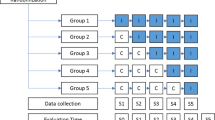Abstract
Background The primary goal of reducing medication errors is to eliminate those that reach the patient. Objective We aimed to study the pattern of interceptions to tackle medication errors along the medication use processes. Setting Tertiary care hospital in Hong Kong. Method The ‘Swiss Cheese Model’ was used to explain the interceptions targeting medication error reporting over 5 years (2006–2010). Main outcome measures Proportions of prescribing, dispensing and drug administration errors intercepted by pharmacists and nurses; proportions of prescribing, dispensing and drug administration errors that reached the patient. Results Our analysis included 1,268 in-patient medication errors, of which 53.4 % were related to prescribing, 29.0 % to administration and 17.6 % to dispensing. 34.1 % of all medication errors (4.9 % prescribing, 26.8 % drug administration and 2.4 % dispensing) were not intercepted. Pharmacy staff intercepted 85.4 % of the prescribing errors. Nurses detected 83.0 % of dispensing and 5.0 % of prescribing errors. However, 92.4 % of all drug administration errors reached the patient. Conclusions Having a preventive measure at each stage of the medication use process helps to prevent most errors. Most drug administration errors reach the patient as there is no defense against these. Therefore, more interventions to prevent drug administration errors are warranted.


Similar content being viewed by others
References
Classen DC, Pestotnik SL, Evans RS, Lloyd JF, Burke JP. Adverse drug events in hospitalized patients. JAMA. 1997;277:301–6.
Leape LL, Brennan TA, Laird N, Lawthers AG, Localio AR, Barnes BA, et al. The nature of adverse events in hospitalized patients. N Engl J Med. 1991;324:377–84.
Bates D, Cullen D, Laird N, Petersen LA, Small SD, Servi D, et al. Incidence of adverse drug events and potential adverse drug events: implications for prevention. ADE Prevention Study Group. JAMA. 1995;274:29–34.
Ito H, Yamazumi S. Common types of medication errors on long-term psychiatric care units. Int J Qual Health Care. 2003;15:207–12.
Leape LL, Bates DW, Cullen DJ, Cooper J, Demonaco HJ, Gallivan T, et al. Systems analysis of adverse drug events. ADE Prevention Study Group. JAMA. 1995;274:35–43.
Wang JK, Herzog NS, Kaushal R, Park C, Mochizuki C, Weingarten SR. Prevention of pediatric medication errors by hospital pharmacists and the potential benefit of computerized physician order entry. Pediatrics. 2007;119:77–85.
Reason J. Human error: models and management. BMJ. 2000;320:768–70.
Leape LL. Error in medicine. JAMA. 1994;272:1851–7.
Moray N. Error reduction as a systems problem. Hillsdale, NJ: Erlbaum; 1994.
Hambleton M. Applying root cause analysis and failure mode and effect analysis to our compliance programs. J Health Care Compliance. 2005;7:5.
Reason J, Hollnagel E, Paries J. Revisiting the Swiss Cheese Model of accidents. France: Eurocontrol Experimental Centre; October 2006. EEC Note No: 13/06.
Bedouch P, Allenet B, Grass A, Labarère J, Brudieu E, Bosson JL, et al. Drug-related problems in medical wards with a computerized physician order entry system. J Clin Pharm Ther. 2009;34:187–95.
Zhang C, Zhang L, Huang L, Luo R, Wen J. Clinical pharmacists on medical care of pediatric inpatients: a single-center randomized controlled trial. PLoS ONE. 2012;7:e30856.
Richardson B, Bromirski B, Hayden A. Implementing a safe and reliable process for medication administration. Clin Nurse Spec. 2012;26:169–76.
Poon E, Keohane C, Yoon C, Ditmore M, Bane A, Levtzion-Korach O, et al. Effect of bar-code technology on the safety of medication administration. N Engl J Med. 2010;362:1698–707.
Sakowski J, Newman J, Dozier K. Severity of medication administration errors detected by a bar-code medication administration system. Am J Health Syst Pharm. 2008;65:1661–5.
Fanikos J, Fiumara K, Baroletti S, Luppi C, Saniuk C, Mehta A, et al. Impact of smart infusion technology on administration of anticoagulants (Unfractionated heparin, argatroban, lepirudin, and bivalirudin). Am J Cardiol. 2007;99:1002–5.
Franklin B, Birch S, Savage I, Wong I, Woloshynowych M, Jacklin A, et al. Methodological variability in detecting prescribing errors and consequences for the evaluation of interventions. Pharmacoepidemiol Drug Saf. 2009;18:992–9.
Arabi I, Alamri A, Al Owais SM, Al-Dorzi H, Noushad S, Taher S. Incident reporting in a tertiary care hospital in Saudi Arabia. J Patient Saf. 2012;8:81–7.
Acknowledgments
The authors would like to thank Professor C.R Kumana from the Department of Medicine, The University of Hong Kong, for his guidance in writing this paper.
Funding
B.M.Y Cheung received support from the Faculty Research Fund, Li Ka Shing Faculty of Medicine, University of Hong Kong. N.R. Samaranayake holds a University Postgraduate Fellowship and a Postgraduate Scholarship from the University of Hong Kong. N.R. Samaranayake also holds the Wong Ching Yee Medical Scholarship for 2012.
Conflicts of interest
None.
Author information
Authors and Affiliations
Corresponding author
Rights and permissions
About this article
Cite this article
Samaranayake, N.R., Cheung, S.T.D., Chui, W.C.M. et al. The pattern of the discovery of medication errors in a tertiary hospital in Hong Kong. Int J Clin Pharm 35, 432–438 (2013). https://doi.org/10.1007/s11096-013-9757-0
Received:
Accepted:
Published:
Issue Date:
DOI: https://doi.org/10.1007/s11096-013-9757-0



